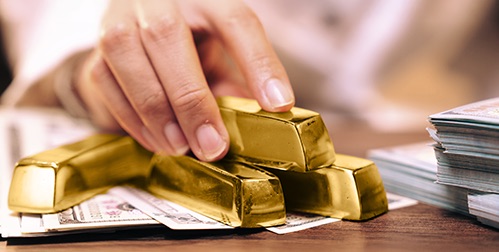- This holiday season, gold is again proving itself a timeless means for financial security
- Gold offers independence, inflation protection, diversification
- A Gold IRA combines wealth-building tax advantages with the benefits of precious metals
A Timeless Asset
More than 2,000 years ago, gold was gifted by wise men as a statement of faith. Today, gold remains a timeless and wise gift, providing economic security in troubling times. As we look ahead to 2025, here are five compelling reasons why gold could be the perfect way to safeguard your financial future.
1. Gold Offers Independence
In an economy increasingly influenced by forces beyond our control, gold stands out as a truly independent asset. The excitement surrounding today’s overheated stock market often feels disconnected from the growing pressures of a rising cost of living. Meanwhile, real estate and the dollar are subject to an inscrutable Federal Reserve agenda. And the rise of a digital dollar is threatening personal financial privacy and freedom.
Gold is not tied to any government or central authority. Its unique properties – including its low correlation with other assets, behavior during various economic conditions, supply dynamics, and recognition by central banks – support this independence. Offering liquidity, privacy, and the ease of transfer— gold is a powerful safeguard against a rapidly changing financial landscape.
2. Hedge Against Inflation
With inflation rates fluctuating, gold remains a proven hedge against the eroding power of the dollar. Inflation has come down from its 40-year record high of 9.1%, but it remains above the Fed’s 2% target. And now, analysts fear inflationary pressures are on the rise. So much so that the Federal Reserve may not cut interest rates at all in 2025. They dread reigniting inflation. Gold’s value tends to rise in response to inflation, offering a stable store of wealth even as paper currencies lose their purchasing power.
Gold’s strong performance in 2024 has reinforced its reputation as an effective hedge against inflation. Despite persistent inflation, gold has surged to new all-time highs, reaching $2,790.07 per ounce in October. Additionally, it increased by 26.85% since the beginning of 2024, significantly outpacing inflation.1

3. Portfolio Diversification
Modern Portfolio Theory emphasizes the importance of diversifying to reduce risk. Gold historically performs well during market downturns, acting as a counterbalance to stocks and bonds. In 2024, gold has been one of the best-performing assets. Even amid positive performance from risk assets, a stronger U.S. dollar, and elevated bond yields. This stellar performance reinforces its value as a key diversification tool in any portfolio.2
4. Rising Demand in 2025
The demand for gold is expected to grow in 2025. It is driven by strong central bank demand from emerging markets like China, India, and Turkey, along with growing consumer interest in Asia. Geopolitical tensions and economic uncertainties are also boosting safe-haven demand. Major financial institutions, including Goldman Sachs, Bank of America, Citibank, and Commonwealth Bank, predict gold will reach $3,000 per ounce by 2025 or 2026. The World Gold Council shares this optimistic outlook, citing factors such as changing monetary policy, a potential weakening of the U.S. dollar, and increasing investor interest in safe-haven assets.3
 4
4
5. Tax Advantages of Gold IRAs
A Gold IRA offers several tax advantages that can help grow your retirement savings. With a traditional Gold IRA, your funds grow tax-deferred until withdrawal. Contributions may also be tax-deductible, reducing your taxable income in the year you contribute. For those with a Roth Gold IRA, qualified withdrawals in retirement are tax-free, provided certain conditions are met. You can also roll over funds from other retirement accounts into a Gold IRA without incurring immediate taxes, if done correctly. Additionally, a traditional Gold IRA may allow you to pay taxes at a lower rate in retirement. Gold IRAs can also help reduce inheritance taxes, making it easier to pass wealth on to your heirs. With Gold IRAs, you get the dual benefits of diversification with precious metals while maintaining IRA tax benefits.
Conclusion
This holiday season, consider the wisdom behind the gift of gold. Whether you’re looking to diversify your portfolio, hedge against inflation, or invest in a secure future, gold offers unparalleled benefits. To learn how you can gain the advantages of a Gold IRA, call American Hartford Gold today at 800-462-0071.




 1
1





 2
2



